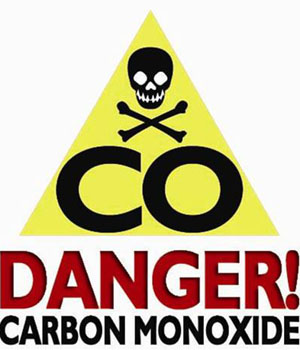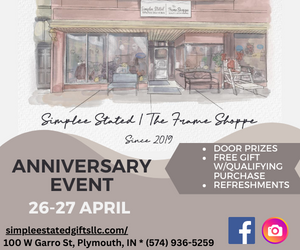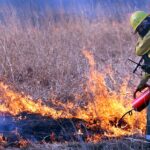 12/23/10 State officials are warning that, as the cold weather continues, so do the increased dangers of carbon monoxide poisoning. These dangers are most commonly associated with alternative heating sources, such as small gasoline engines, stoves, generators, lanterns, gas ranges or by burning charcoal and wood.
12/23/10 State officials are warning that, as the cold weather continues, so do the increased dangers of carbon monoxide poisoning. These dangers are most commonly associated with alternative heating sources, such as small gasoline engines, stoves, generators, lanterns, gas ranges or by burning charcoal and wood.
Carbon monoxide (referred to sometimes as CO) is an odorless, colorless gas that can cause sudden illness and death if inhaled. State health officials say more than 500 Americans die from unintentional carbon monoxide poisoning each year.
“The most common symptoms of carbon monoxide poisoning are headache, dizziness, weakness, nausea, vomiting, chest pain, and confusion,” said Mike Mettler, Director of Environmental Health at the Indiana State Department of Health. “High levels of carbon monoxide inhalation can cause loss of consciousness and even death.”
Mettler recommends the following to anyone experiencing symptoms of carbon monoxide poisoning:
- Get fresh air immediately.
- Open windows and doors for more ventilation, turn off any combustion appliances, and leave the house.
- Call 911.
- Before turning your fuel-burning appliance back on, make sure a qualified service technician checks and approves its use.
“All people and animals are at risk for carbon monoxide poisoning,” said Mettler. “Certain groups—unborn babies, infants, and people with chronic heart disease, anemia, or respiratory problems—are more susceptible.”
Carbon monoxide from combustion sources can build up in enclosed or semi-enclosed spaces. People and animals in these spaces can be poisoned by breathing CO. State health officials recommend every home has a functioning CO alarm. These low-cost alarms can be found at your local hardware store.
In order to prevent carbon monoxide poisoning:
- Never use generators, grills, camp stoves, or other gasoline, propane, natural gas, or charcoal-burning devices inside a home, basement, garage, or camper or even outside near an open window.
- Never allow your car to idle within a closed garage.
- Have at least one working carbon monoxide detector in your home. Check the detector’s batteries twice each year, at the same time you check smoke detector batteries.
- Exercise caution when heating with propane appliances, older wall or floor gas furnaces and fireplaces.
- Place emergency generators outdoors away from windows and doors to prevent fumes from entering the home.
Carbon monoxide should not be confused with carbon dioxide, a colorless, odorless, incombustible gas formed during respiration, combustion, and organic decomposition and used in food refrigeration, carbonated beverages, inert atmospheres, fire extinguishers, and aerosols.
For additional information about protecting you and your family from carbon monoxide, please visit http://www.in.gov/isdh/24337.htm.














